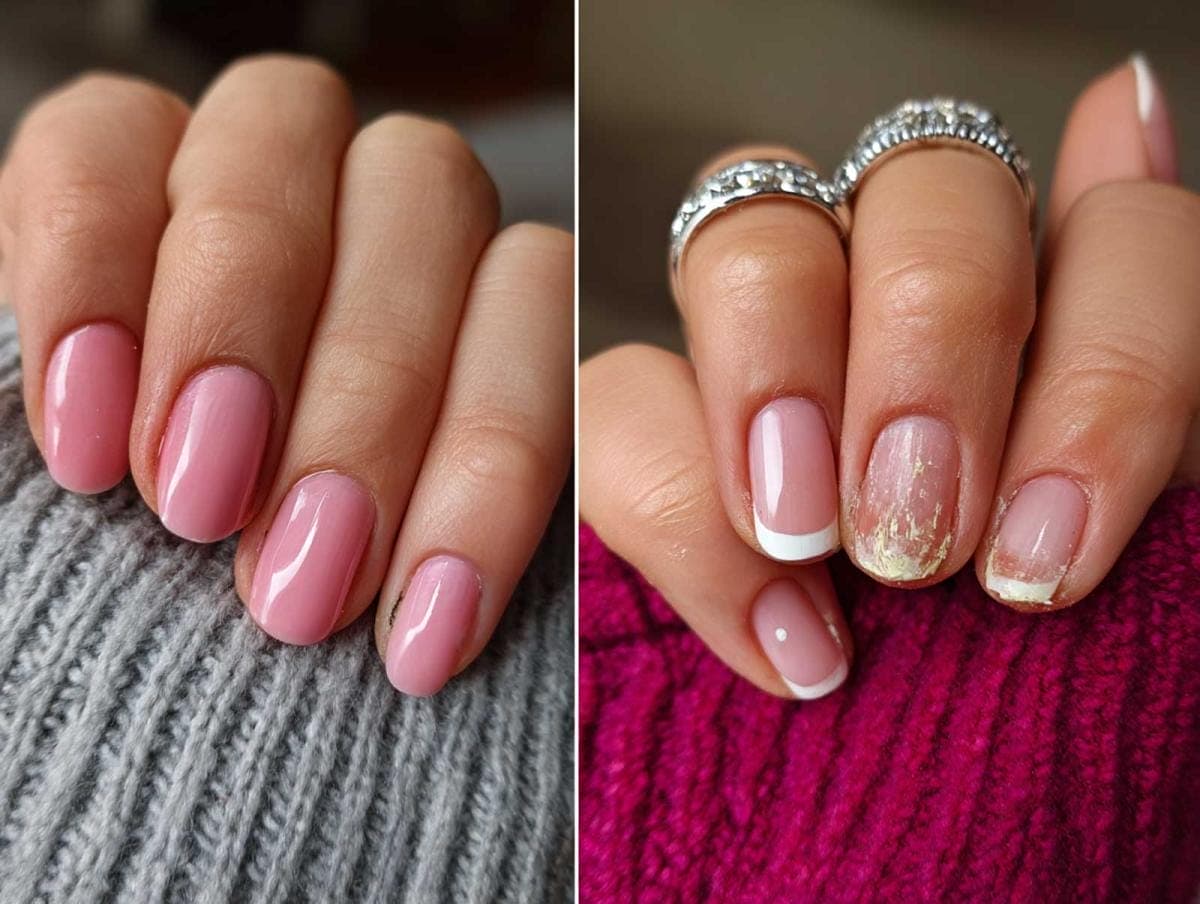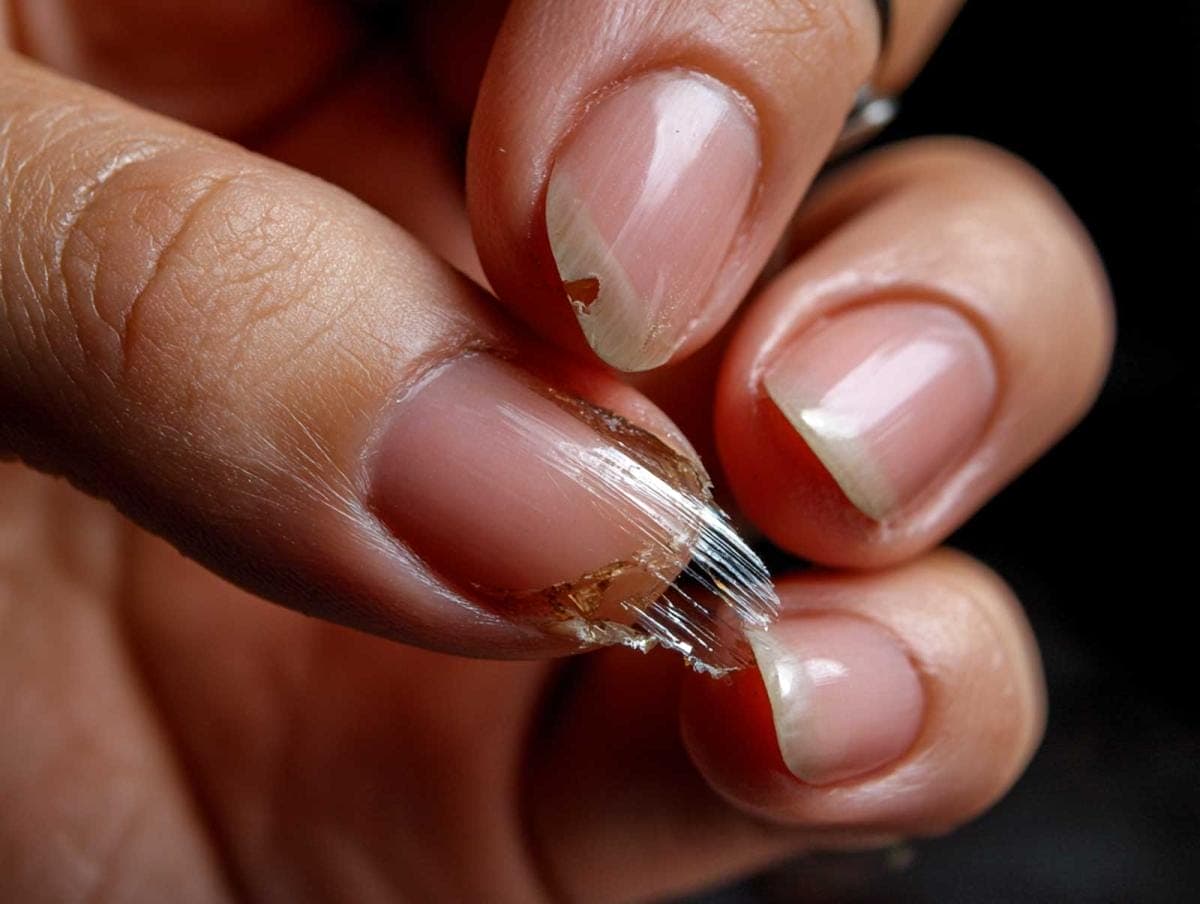Beauty, Trends & Opinions, Wellness
Acrylic Nails: The Beauty Upgrade That Comes at a Cost
If you click on links we provide, we may receive compensation.
There’s something undeniably appealing about acrylic nails. The dramatic length. The perfect shape. The click-clack sound when typing or tapping a screen. For many, they’re more than just a cosmetic boost – they’re a lifestyle choice. But beneath the glossy finish is a long list of risks that most people don’t think about until it’s too late.
This isn’t a crusade against acrylics. It’s a realistic look at what they do to your natural nails, skin, and even your long-term health. Because beauty should never come at the cost of your well-being. Let’s get into why acrylic nails, while tempting, might not be worth the trouble.
What Exactly Are Acrylic Nails?
Acrylic nails are made by mixing a liquid monomer (usually ethyl methacrylate or methyl methacrylate) with a powder polymer. This forms a paste that’s shaped over your natural nail or a plastic tip, then hardens as it’s exposed to air. The result is a strong, long-lasting extension that can be painted, filed, and styled in endless ways.
They’re popular for good reason. Acrylics last longer than regular polish, they don’t chip easily, and they let you customize your nails into any shape or length you want. For people with weak or brittle nails, acrylics seem like a solution. But the trade-offs aren’t always obvious at first.
The Damage Begins with Application
From the moment you sit down at the nail salon, your natural nail is under threat. For acrylics to adhere properly, the nail technician must roughen the surface of your nail plate with a file or electric buffer. This thins the nail, removing protective keratin layers.
Your nails don’t grow back thicker once they’ve been filed down. Repeated applications leave them thinner, weaker, and more prone to splitting and peeling.
Then comes the chemical bonding. The liquid monomers used in acrylics contain strong solvents and bonding agents. These chemicals can penetrate the nail plate and surrounding skin, sometimes causing irritation or allergic reactions. If the salon uses methyl methacrylate (MMA), a cheaper but harsher version banned in many countries, the damage can be even more severe. MMA can cause permanent nail deformities and painful skin reactions.

The Infection Risk Is Real
One of the most underreported dangers of acrylic nails is infection. Gaps between the acrylic and the natural nail are perfect hiding spots for moisture, bacteria, and fungus. Once trapped, they multiply fast.
The acrylic nail itself can mask early warning signs. You won’t see the yellowish tinge of fungus until the infection has spread. Some people only realize there’s a problem when the natural nail begins to separate from the nail bed – a condition called onycholysis, which can take months to heal.
Improperly sanitized tools or aggressive pushing and cutting of cuticles also opens the door to infection. And let’s not forget that many people leave their acrylics on for far too long. Lifting and cracking increase the risk of contaminants getting underneath.
Breakage Can Be Painful and Permanent
Acrylics are hard and rigid. Your natural nails are not. When you hit or bend an acrylic nail, the force often transfers directly to the natural nail underneath. This can cause the natural nail to split, crack, or even tear away from the nail bed.
Anyone who’s caught their acrylic on a sweater or doorframe knows how painful this can be. In some cases, the trauma can permanently damage the matrix – the part of the nail responsible for growth. That means your nail may never grow back normally again.
Chemical Exposure Adds Up
Every acrylic appointment adds another layer of chemical exposure. The smell in nail salons isn’t just unpleasant – it’s a warning sign. Many of the substances used in acrylic application are classified as volatile organic compounds (VOCs), including formaldehyde, toluene, and acetone.
These chemicals can irritate the eyes, nose, and lungs. Prolonged exposure in poorly ventilated areas has been linked to headaches, dizziness, and respiratory issues. While the occasional visit might not do serious harm, regular long-term exposure can build up, especially for nail technicians who work in these environments daily.
The Environmental Working Group (EWG) has raised concerns about the cumulative exposure to endocrine disruptors and carcinogens from salon products. If you’re pregnant or immunocompromised, that exposure becomes even riskier.
Allergies and Sensitization Can Develop Over Time
Even if you’ve never reacted to acrylics before, you’re not in the clear. Sensitization happens gradually. With repeated exposure, your immune system can start reacting to the monomers or additives in the product.
Once sensitized, even trace contact can trigger itching, burning, swelling, or blistering around the nail and fingertip. In some cases, the reaction spreads beyond the hands. The only solution is to avoid acrylics entirely from that point forward.
And if you think switching to gel nails is the solution, think again. Many of the same allergens are used in both systems, especially in hybrid or dip powder techniques.
Removal Isn’t Harmless Either
Taking off acrylics is its own ordeal. You can’t just peel them off – at least, not without serious consequences. Proper removal involves soaking the nails in acetone for 15 to 30 minutes. Acetone is drying and irritating, both to the nails and the surrounding skin.
After soaking, the softened acrylic is scraped away with a tool. This often causes further trauma to the already-thin natural nail underneath. Some salons speed up the process with drills, which can cause heat damage or leave microscopic grooves in the nail bed.
Repeat this cycle enough times, and your nails start to look paper-thin, ridged, and discolored. They may become so weak they bend or tear under normal daily pressure.
Salon Hygiene Is Not Guaranteed
Not all nail salons are created equal. Many cut corners, whether to save time or money. Autoclaving tools between clients should be the gold standard, but it’s not always done. Some reuse disposable items like files or buffers. Others use illegal or outdated products.
Without strict hygiene, even minor cuts or nicks from cuticle scissors can turn into bacterial infections. In worst-case scenarios, people have developed staph infections or even contracted hepatitis B or fungal diseases from unsanitary tools. Even if your regular technician is trustworthy, it only takes one rushed appointment or borrowed file to cause problems.
There’s Also a Financial Toll
Acrylics are expensive. A basic set can cost anywhere from $40 to $100, depending on location and salon. Fancy nail art or custom shapes push the price higher. Add in fill appointments every 2 to 3 weeks and occasional repairs, and you’re looking at hundreds of dollars every few months.
Over a year, that adds up to more than $1,000 – often just to maintain an artificial look that’s damaging the nails you were born with.
Mental and Emotional Impact
Here’s something rarely talked about the anxiety around acrylic nail maintenance. Once you start, it becomes hard to stop. As your natural nails grow out and the acrylic lifts, you feel pressure to get them redone before they look “ugly.” The fear of being seen with cracked, grown out, or damaged nails can lead to constant upkeep.
People often describe it like a cycle. You get them done, enjoy them for a bit, then feel stressed the minute they start to grow out. And because the removal process leaves your nails weak and brittle, you’re more likely to go back for another set rather than face the damaged natural nails.
This dependency can feel a lot like the relationship some people have with hair dye or lash extensions – you start because it’s fun, but over time, it becomes a necessity just to feel presentable.

What Happens When You Finally Stop?
Most people who quit acrylics are shocked by what their natural nails look like afterward. Thin. Peeling. Transparent in places. It can take 6 months to a year for the nail plate to fully regrow and recover – and that’s if the nail matrix hasn’t been permanently damaged.
During this time, nails are more prone to breakage and infection. You’ll need to baby them with moisturizing oils, nail strengtheners, and lots of patience.
Some nails never fully return to their original thickness or appearance. Others develop chronic ridges or discoloration. It’s a long road back.
Are There Safer Alternatives?
If you love the look of polished, styled nails but don’t want to risk your health, there are better options.
Press-on nails have come a long way in recent years. High-end versions mimic the appearance of salon acrylics without the chemicals or damage. They’re reusable, affordable, and easy to remove.
Builder gels and structured manicures offer some of the durability of acrylics but use less aggressive chemicals. They still require care and removal by a professional, but the overall risk profile is lower.
Even regular polish, applied over strong, healthy natural nails, can look just as elegant with the right shape and shine. Nail care, including cuticle oil and gentle buffing, can elevate your hands without needing fake length.
FAQ
Are acrylic nails toxic?
The chemicals used in acrylics can be harmful in high or repeated exposures. While the occasional set is unlikely to cause major harm, frequent use, especially with poor ventilation, increases health risks.
Can acrylics cause permanent damage?
Yes. If the nail matrix is damaged due to trauma or repeated abuse, the natural nail may grow back irregularly – or not at all.
Is MMA still used in nail salons?
While banned or restricted in many countries, some low-cost salons still use MMA because it’s cheaper. Ask your technician what they’re using. EMA (ethyl methacrylate) is safer and more commonly approved.
How long should I wait between acrylic sets?
It’s best to take breaks of at least a few months between sets to let your natural nails recover. During this time, use strengthening treatments and moisturizers.
Are gels safer than acrylics?
Gel nails are slightly less damaging but still pose risks, especially with improper removal. They often use similar allergens and still require chemical exposure.
What’s the best way to repair damaged nails?
Hydration is key. Use cuticle oil daily, wear gloves during chores, and try biotin supplements if your doctor approves. Skip polishes and let nails breathe.
Beauty Shouldn’t Hurt
Acrylic nails can be stunning, but the price of beauty shouldn’t include pain, infection, or long-term damage. Like any cosmetic treatment, they come with risks. If you’re fully informed and choose to wear them anyway, that’s your call. But if you’re caught in a cycle of damage and dependency, know this: your natural nails deserve a break. And they can be beautiful too.




